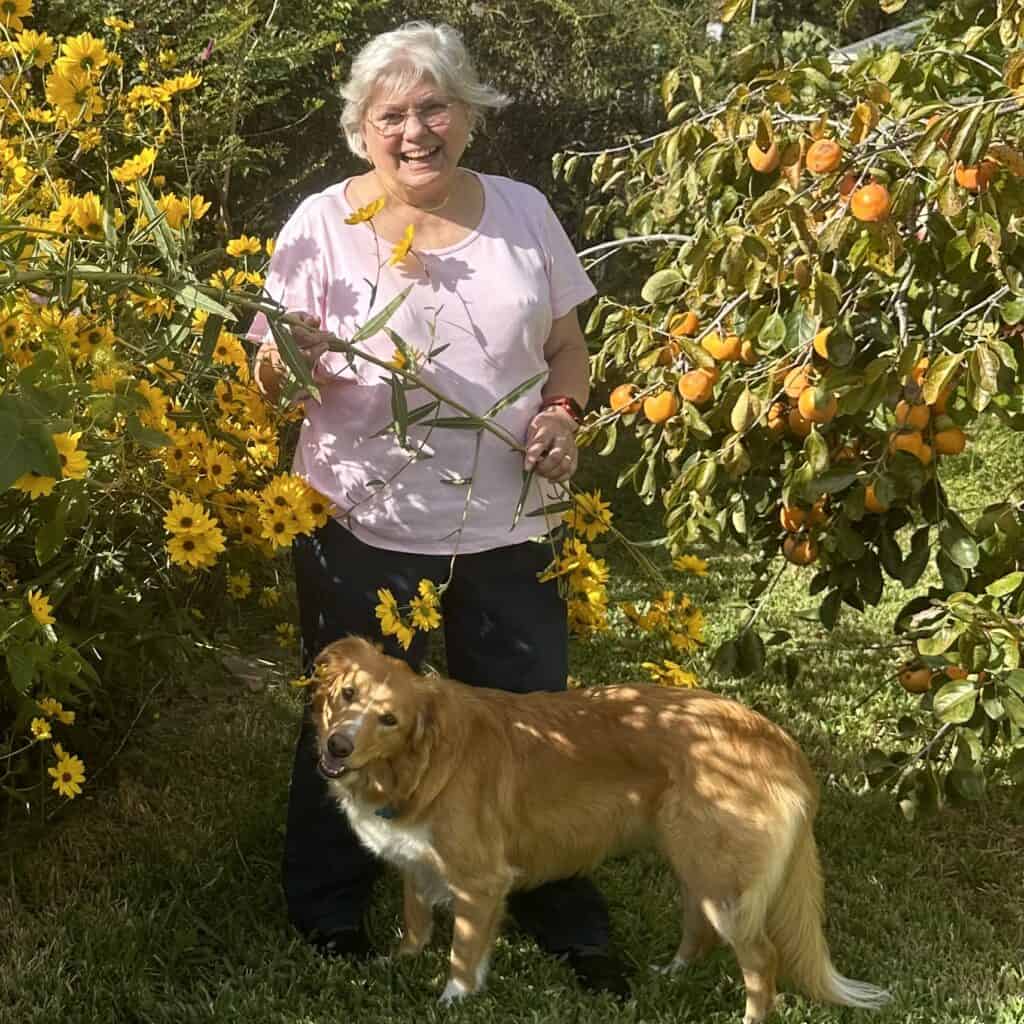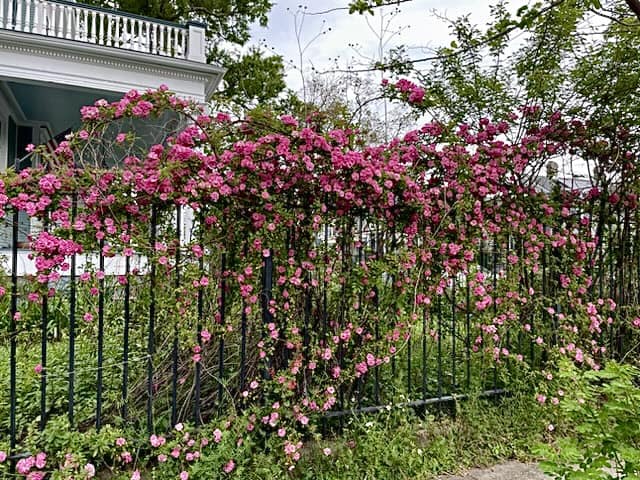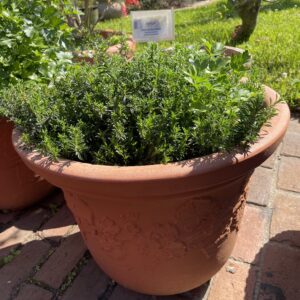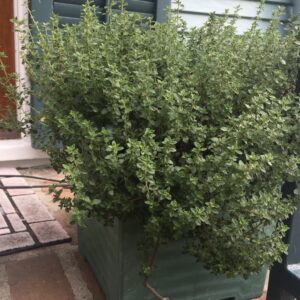Anne Barnes (LMG Class of 2011 pictured here on a glorious fall morning with her favorite companion planter, Ariel) is a seasoned Louisiana gardener who has cultivated a magnificent landscape at her uptown home. She has earned three certifications for her commitment to nurturing nature in her urban landscape: Louisiana Certified Habitat, Certified Wildlife Habitat and Green Bridges Certified Garden. Enjoy this virtual tour of Anne’s happy place!
Master Gardener Spotlight: Anne Barnes
Please tell us a little about yourself.
I’m a New Orleans native and a retired Registered Nurse, I currently manage my husband’s medical office. We still work three days a week. We have three children and are lucky enough to have two darling grandchildren. I’ve always had a garden. I grew tomatoes and flowers as a child, parsley in cans in apartments, and even had a good sized garden on glass shelves in a south facing window when living on the 21st floor of an apartment building in New York City. I’ve done volunteer work at the kids’ schools, lots of arts organizations, some civic events and plant groups. I’m a 25-year member of the Herb Society of America, a Certified Master Naturalist, a member of the Native Plant Initiative of GNO, and an enthusiastic Louisiana Master Gardener.
Who or what inspired you to become a master gardener?
When working the garden shows for the Herb Society, I was always so impressed by the comradery and enthusiasm of the Master Gardeners. After speaking with some MGs, I realized I could fit the program into my schedule.
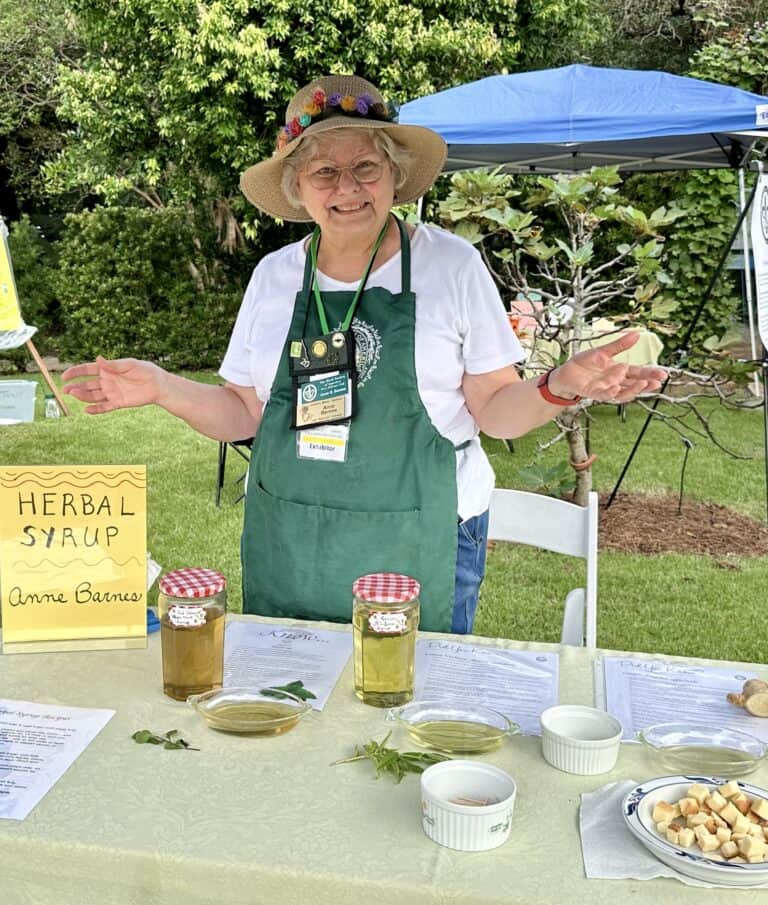
Anne, legacy member of the The Herb Society – New Orleans Unit, at the 2024 Fall Garden Festival in City Park shares her secret for herbal syrups (see recipes below).
Anne, legacy member of the The Herb Society – New Orleans Unit, at the 2024 Fall Garden Festival in City Park sharing her secret for herbal syrups (see recipes below).
What do you love most about being a master gardener?
Definitely, it’s the opportunity to meet new people who share your passion for gardening plus the ongoing educational programs that broaden your knowledge of every aspect of horticulture.
.
How do you earn your volunteer service hours?
I work the garden shows at the New Orleans Botanical Garden and Herb Society plant sales. Also I do speaking engagements for the MGGNO Speakers Bureau.
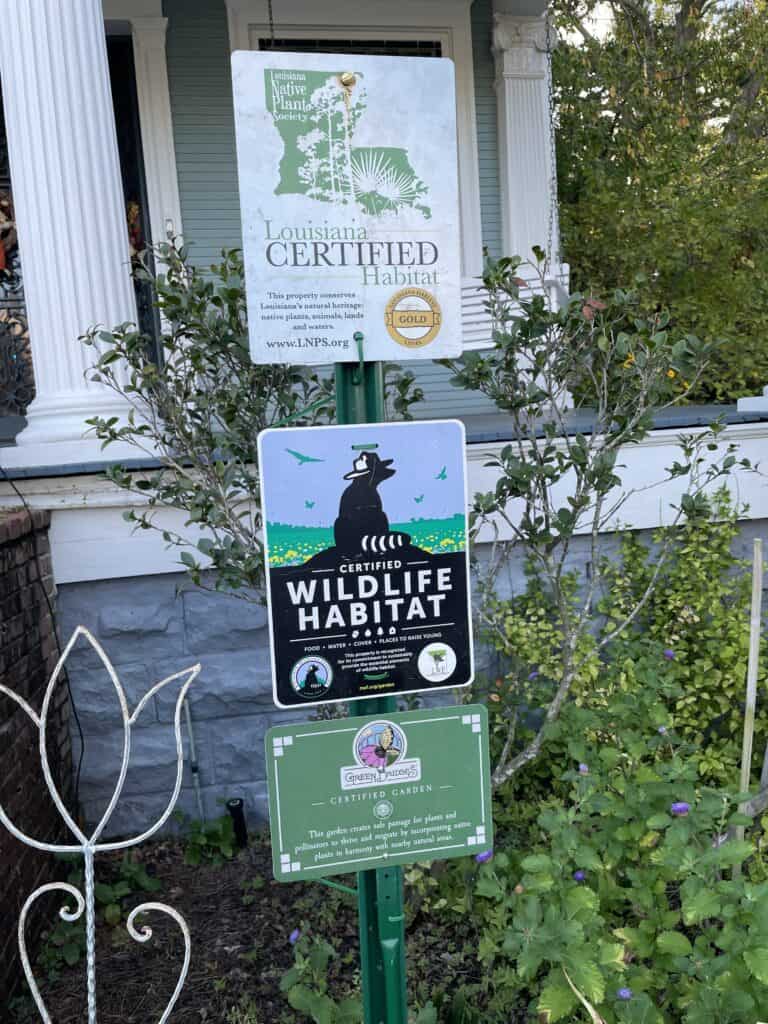
Anne’s impressive collection of garden certifications validates her commitment to sustainable landscaping practices.
What gives you the most satisfaction about gardening?
I like all of it. I love the design part, thinking about how plants work together, what purpose they serve in a garden besides beauty. I enjoy the peace of weeding – me and a shovel or fork and the simple getting the bits out. Seeing the plants grow and giving me beauty as well as nourishing the environment and in a greater sense, the planet, and in the case of my herbs and vegetables, good things for my kitchen and family, and sharing all of it with others. I’ve met my entire neighborhood while weeding.
How would you categorize your gardening style?
Most of my yard is a cottage garden style. One side is dedicated as a wildlife area with mostly natives. I find it hard to control plants which is the essence of gardening. I want them to do their own thing. The six-foot iron fence that surrounds our property supports a variety of vines that provide year-round seasonal color and nectar for pollinators. The front garden (formerly lawn) is small but packed with seasonal color from black eyed susans, native ferns, gaillardia, lemon beebalm, asters, slender rosinweed, American beautyberry, guara, and more,
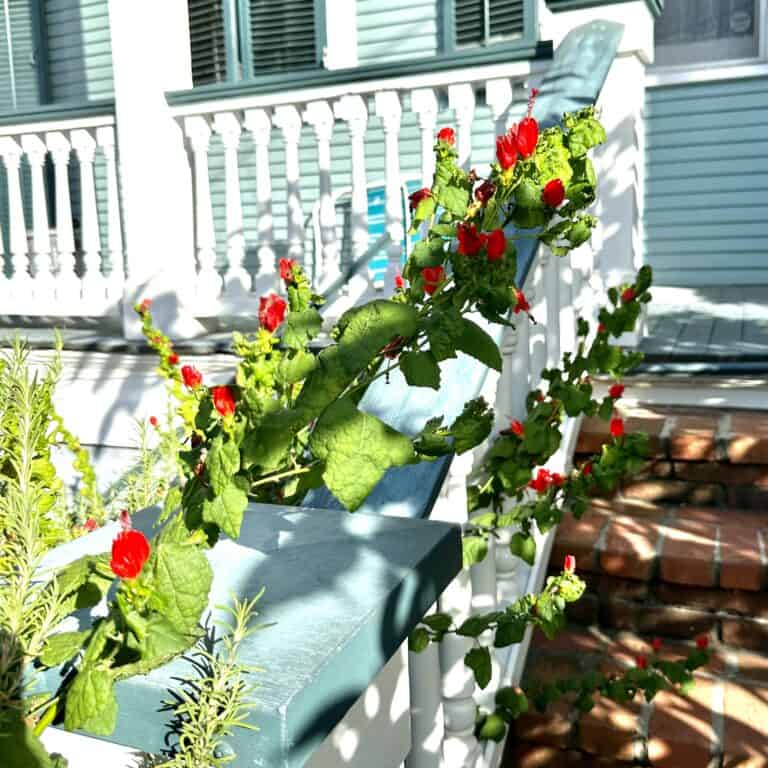
Native Turk’s Cap (Malvaviscus arboreus var. drummondii) creates a festive garland at the back entrance to Anne’s home.
If you could have only one plant in your garden, what would it be?
I do not think I could chose one plant but if it were groups of plants, it would be between herbs and roses. I use the herbs so much, they are beautiful and diverse, they have huge wildlife uses and can be grown in ground or containers. Roses are so beautiful and fragrant and in our climate, can bloom almost all year. I have nurtured an heirloom rose, Cecile Brunner, from my grandmother’s garden for decades. It is a constant reminder of the legacy she left me.
What is your biggest gardening challenge?
At this point in my life, the physical challenges loom large. But I am very blessed to have a few devoted garden angels who are always willing to help me plant and weed.
What do you love learning about most as a gardener?
I like everything, which sounds trite, but I’m especially interested in learning how plants function in making ‘life’ work. How they have evolved, how they perform a function in keeping life going, how they change in times of stress or opportunity.
How would you complete this sentence: “You will always know you are in my garden because you will see….”?
Wildlife and weeds! Bugs are always welcome in my garden but the weeds not so much. Katrina had a profound influence on my gardening. I had had a very small butterfly garden for many years but the silence, brown and gray landscape after Katrina troubled and inspired me. So I wanted to plant a new garden that could withstand the next onslaught. My mission was to introduce native plants began and I converted the entire north side of our property to a native habitat. The reward has been extraordinary!
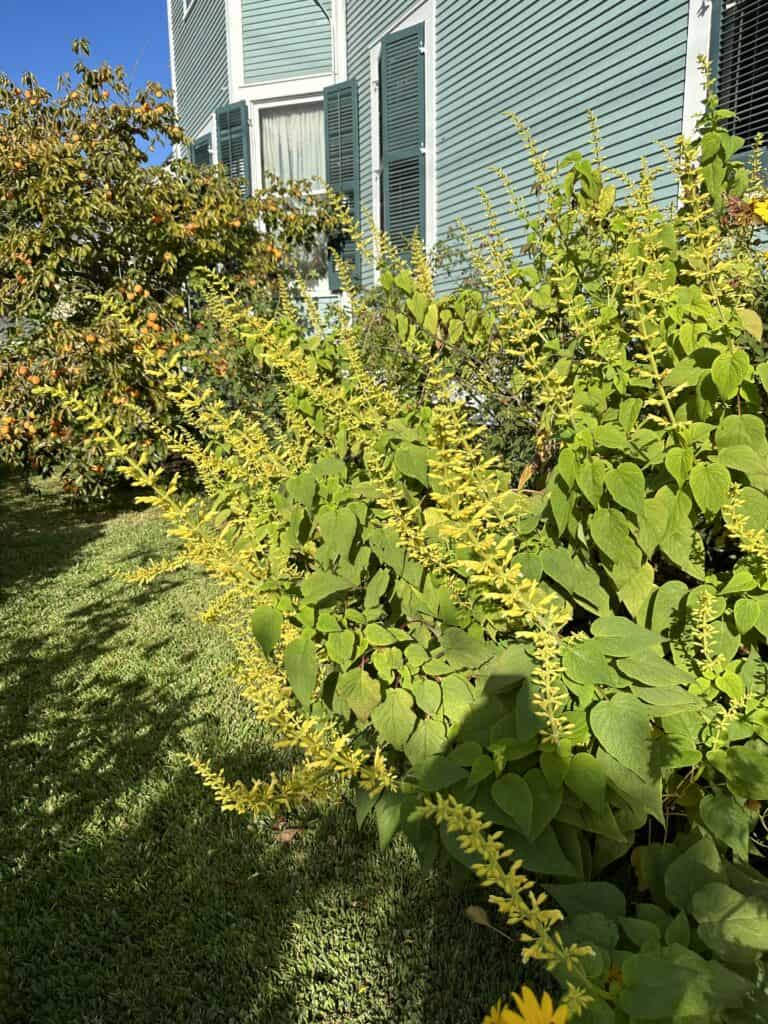
Salvia madrensis explodes in fall to attract wildlife along with many other native pollinator plants (see below) thriving in Anne’s garden.
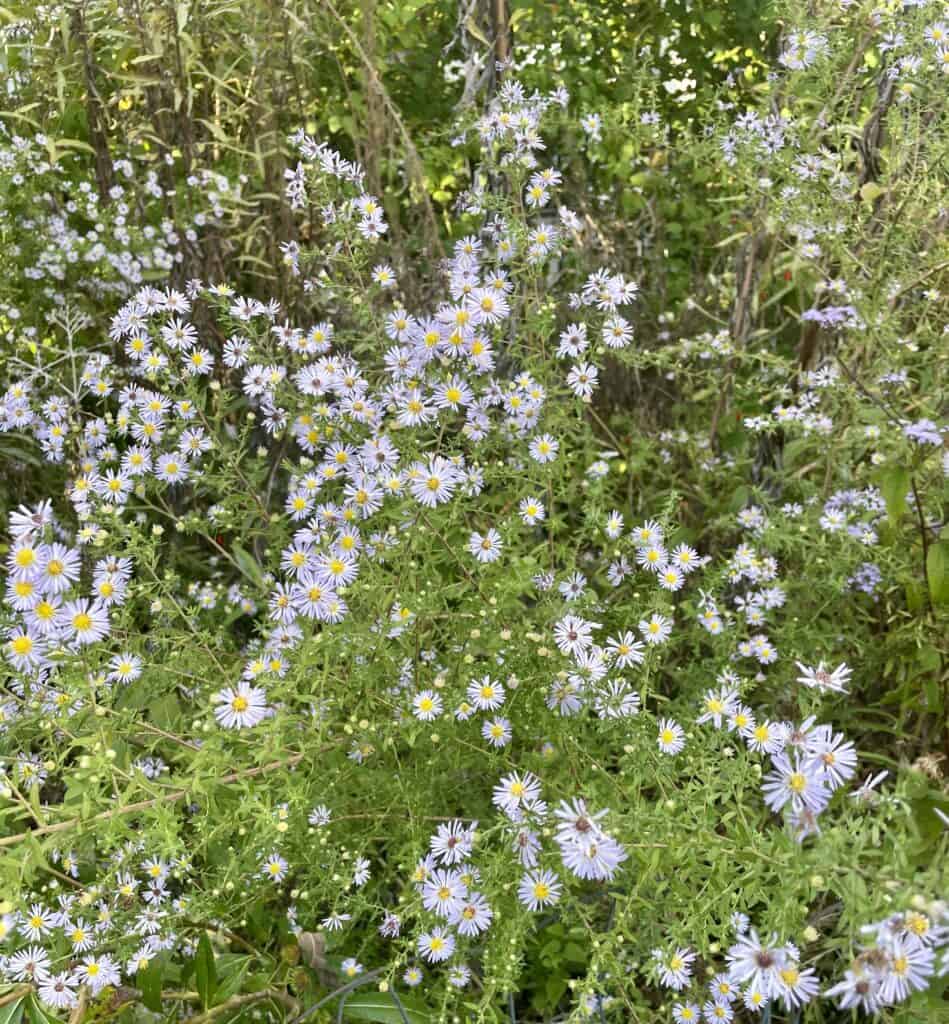
Fall Asters
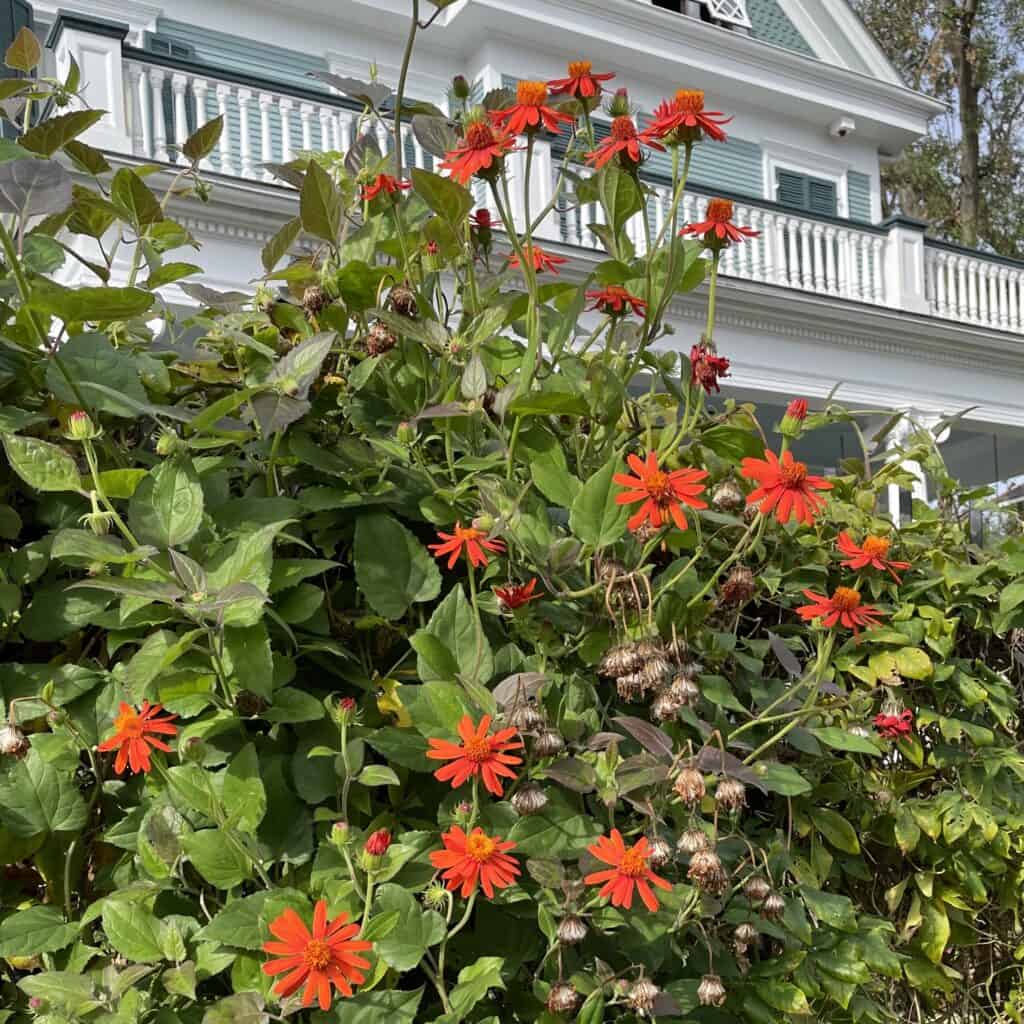
Mexican Flame Vine

Joe Pye Weed
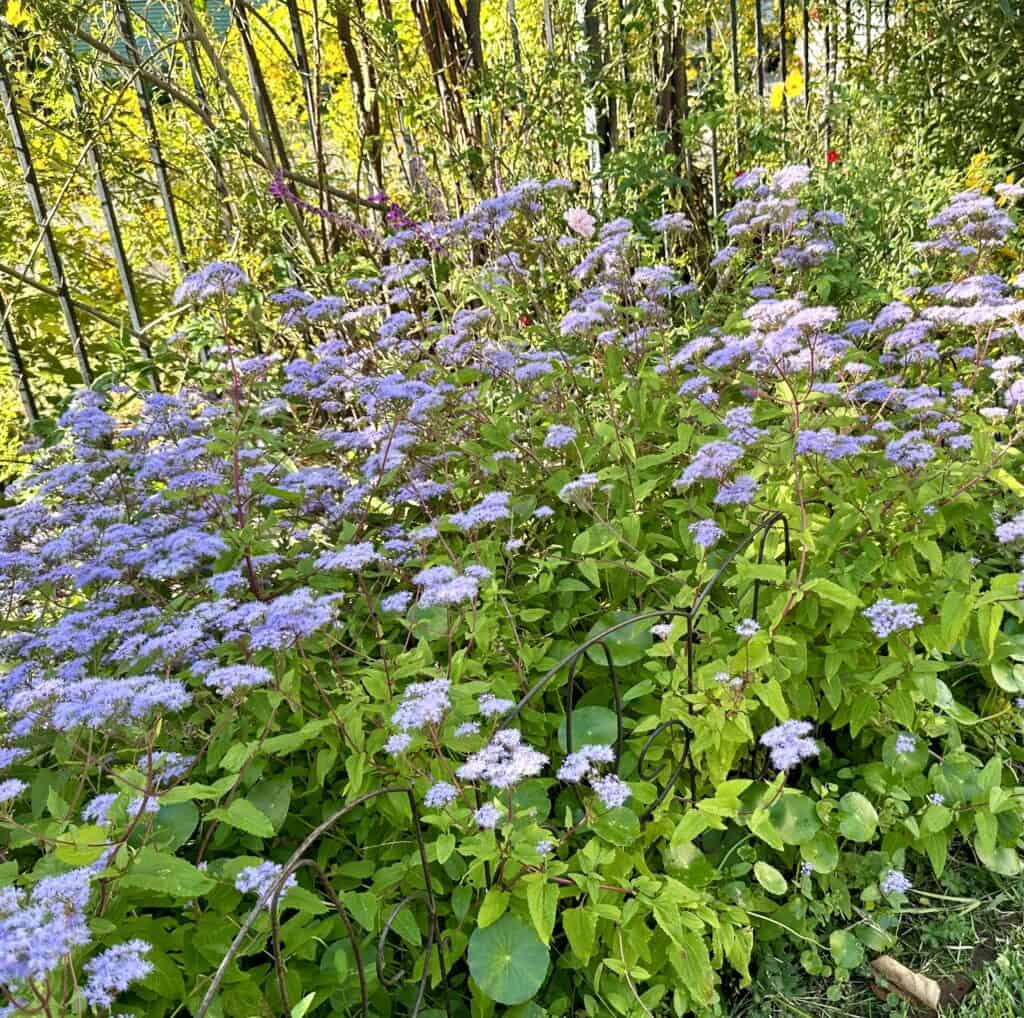
Blue Mistflower
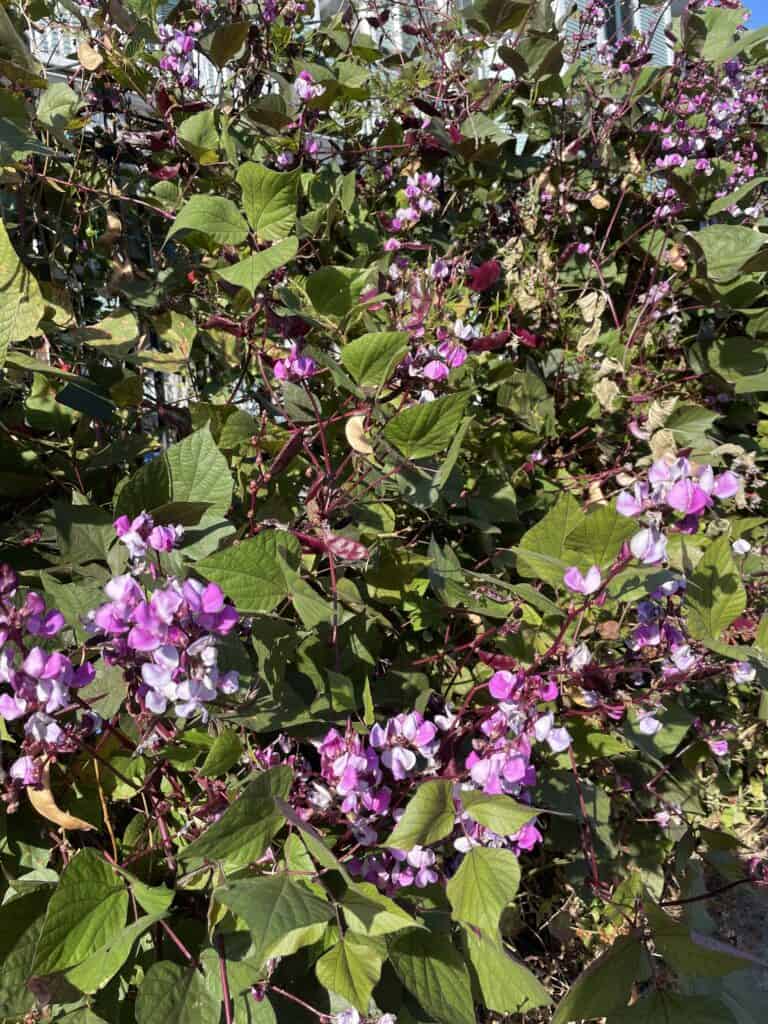
Hyacinth Bean
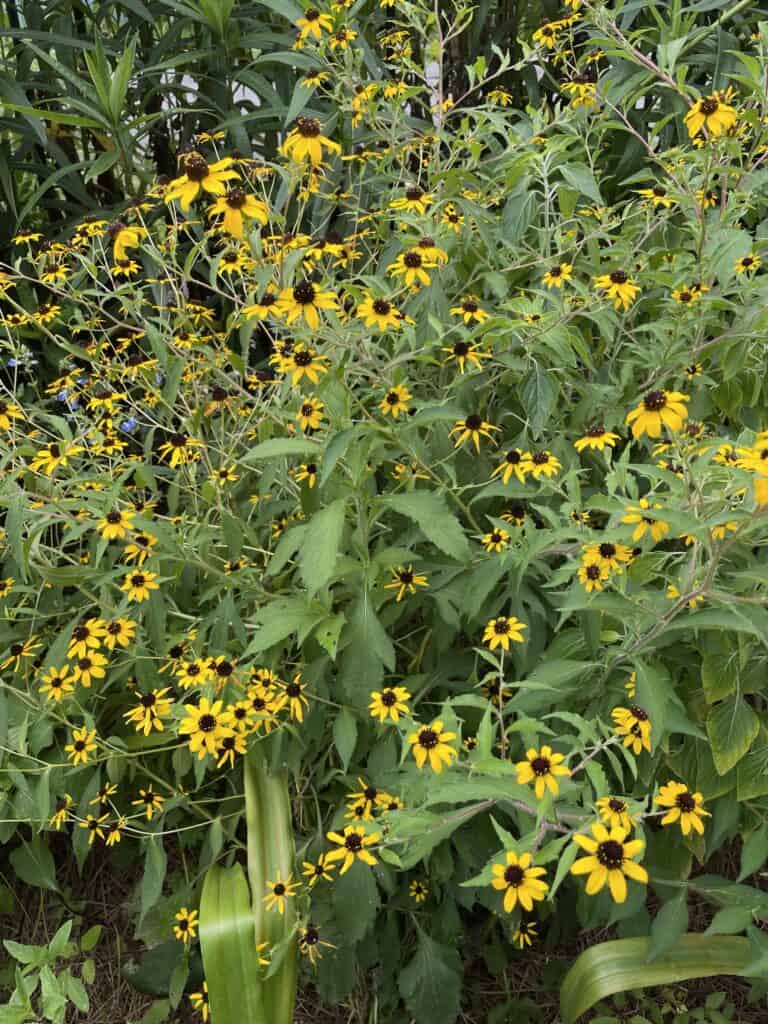
Cutleaf Coneflower
What book most inspired your gardening passion that you would recommend to others?
When I first began to take making a real garden seriously, I read Charlotte Seidenberg’s (a high school classmate) book, The New Orleans Garden, Gardening in the Gulf South. Her writing about plants identifying their cultural and historical importance as well as horticultural information was an eyeopener.
Lagniappe
Anne’s Herbal Syrups:
Ginger Syrup
- Combine 2 cups water with 3 cups sugar until sugar fully dissolves.
- Add 1 cup fresh ginger, peeled and sliced into Coins to boiling liquid,
- Simmer for 15 mins or until you like the flavor.
- Strain and bottle for later use.
- Use to make a tea (add to hot water to taste), flavor cocktails or dessert sauces, make homemade ginger ale.
Mint Syrup
- Boil 2 cups water boiled with 2 cups sugar until fully dissolved.
- Add 2 cups of packed mint leaves, stems, and flowers.
- Allow to steep for an hour. Strain and bottle for later use.
- Use as above in iced tea, the best mint juleps ever, on fruit, especially strawberries, cake, dessert sauces, by the spoonful if you like.
Lemon Verbena Syrup
- Boil 2 cups water with 2 cups sugar until fully dissolved.
- Add 2 cups lemon verbena leaves and stems and allow to steep for an hour.
- Use wherever a lemon flavor is desired, beverages, desserts, fruits, cocktail.
- 1 garlic clove peeled and coarsely chopped
- 1 tsp Dijon mustard,
- 1 egg
- 3 Tbsp lemon juice
- 4 coarsely chopped green onions,
- ¼ cup parsley leaves,
- ¾ cup basil leaves or dill stems and leaves.
- ¾ cup canola oil
Pulse to blend a few times. Slowly add ¾ cup of canola oil while blending/processing. When it is well mixed and no longer splattering on the walls of the container, it’s done. The entire process takes less than 2 minutes. Add ¼ tsp. of cayenne to taste and spin again. Taste for your own palate. You may want a little more lemon or garlic or less next time. The longer you spin it, the thicker it gets. If it’s too thick, add a little water. It’s very forgiving. Note: An egg will hold ¾ to 1 cup of oil with mustard as an emulsion aid.
Photography:
Anne Barnes
Cynthia Maldonado
Linda Wegmann

